
A blog focusing on 1/64 diecast from such popular brands as Hot Wheels, Matchbox, Johnny Lightning, M2 Machines, GreenLight, Tomica, Yat Ming, Majorette, MotorMax, Siku, Corgi, Guisval, Playart, Ertl, Zylmex, Racing Champions, & many more. Swifty's Garage features a daily Car Of The Day and news updates from your favorite brands!
Monday, August 15, 2011
Car Of The Day: August 15, 2011
Today's car of the day is Johnny Lightning's 1957 Chevrolet Bel Air.
The 1957 Chevrolet is an automobile which was introduced by the Chevrolet division of General Motors in September, 1956. It was available in three series models: the upscale Bel Air, the mid-range "two-ten", and the "one-fifty". A two-door station wagon, the Nomad was produced as a Bel Air model. An upscale trim option called the "Delray" was available for two-ten 2-door sedans. It is a popular and sought after classic car. These vehicles are often restored to their original condition and sometimes modified. The car's image has been frequently used in toys, graphics, music, movies and television. The '57 Chevy, as it is often known, is an auto icon.
For more information and pictures of the real car please visit: Chevrolet Bel Air
From the taped over headlight to the primer and rust spots, this was one of the forerunners to Johnny Lightning's Projects In Progress cars.
Initially, General Motors executives wanted an entirely new car for 1957, but production delays necessitated the 1955-56 design for one more year. Ed Cole, chief engineer for Chevrolet, dictated a series of changes that significantly increased the cost of the car. These changes included a new dashboard, sealed cowl, and the relocation of air ducts to the headlight pods, which resulted in the distinctive chrome headlight that helped make the '57 Chevy a classic. Fourteen-inch wheels replaced the fifteen-inch wheels from previous years to give the car a lower stance, and a wide grille was used to give the car a wider look from the front. The now famous '57 Chevy tailfins were designed to duplicate the wide look in the rear. Bel Air models were given gold trim: the grille, front fender chevrons, hood, and trunk script were all rendered in anodized gold. The base engine was an inline 6-cylinder called the Blue Flame Six. The engine was smooth running and more fuel-efficient than the V-8. Carburetion came from a single one-barrel carburetor.
From a numbers standpoint, the '57 Chevy wasn't as popular as General Motors had hoped. Despite its popularity, rival Ford outsold Chevrolet for the 1957 model year for the first time since 1935. The main cause of the sales shift to Ford was the fact the '57 Chevy had tubeless tires, the first car to have them. This scared away sales to Ford as many people did not initially trust the new tubeless design. Also Ford's introduction of an all-new body styling that was longer, lower, and wider than the previous year's offerings helped Ford sales. However, the 1957 Ford — with the exception of the rare retractable hardtop model — is not nearly as prized by collectors today as the 1957 Chevrolet. Throughout the 1960s and 1970s, the '57 Chevy was a popular used car and highly prized "street machine" or hot rod in 1957 terms. It was the final year of the "shoebox" Chevrolet, as 1958 saw the introduction of a much larger and heavier "X" framed Chevrolet. The ideal size of the '57, combined with its relatively light weight compared to newer full-sized cars, made it a favorite among drag racers. The engine bay was big enough to fit GM's big-block engines, first introduced in 1958 and popularized in the 1960s by the Beach Boys in the song "409". The relatively simple mechanical attributes of the car made it easy to maintain, customize, and upgrade with components such as disc brakes and air conditioning.
The big block, however, was not what put the '57 on the map on the street scene; it was the introduction and the over-the-counter, low-priced availability of the small block, 365 horsepower 327 in 1962 that was the blockbuster that made both the '55 and '57 Chevy able to beat the Ford hotrods with their flathead V8s. This was a major turning point in American hot rodding: Chevrolet had claimed the street scene from Ford. The '57 Chevy also won 49 Grand National "cup" NASCAR races, more than any other car and subsequently were used up in stock car racing at a very high rate. With the 283 engine placed from the factory behind the centerline of the front wheels made the '57 a superior handling car on the short tracks and the dirt tracks as well. This mechanical advantage, coupled with a high reving reliable 283 earned the '57 the nickname "king of the short tracks". With the fuel injected 283, the 150 model two door sedan version, called the "black widow", was the first car that was outlawed (and quickly so) by NASCAR as it proved almost unbeatable on virtually all the NASCAR tracks in early 1957. After the "57 was grandfathered out from the now "cup" division in 1960 and relegated to the lower local track sportsman divisions they were the car to beat for years. Surprisingly enough, the '57 Chevy also won a disproportionate amount of demolition derbys as well: With the radiator set back from the grille, the car was difficult to disable. The additional advantage of having the last double lined trunk, coupled with a strong frame, made it a surprisingly common winner in the demolition derbies during the late 1960s and early 1970s. By the 1970s, the '57 Chevy became a collector car.
Companies such as Danchuk Manufacturing, Inc. and Classic Chevy International began selling reproduction and restoration parts. In the early 1990s, the value of meticulously restored '57 Chevy convertibles was as high as $100,000. Though those peaks gave way significantly after 1992, the '57 Chevy has held its value and now is poised to exceed the previous peak.
Restored, original examples are increasingly rare, and modern customizers and restorers are creating fast, powerful, ultra-modern hot rods that are winning the '57 Chevy a whole new generation of fans. Fiberglass and all-steel reproductions are making it possible for future generations to enjoy the '57 Chevy as original cars become harder to find.
Subscribe to:
Post Comments (Atom)

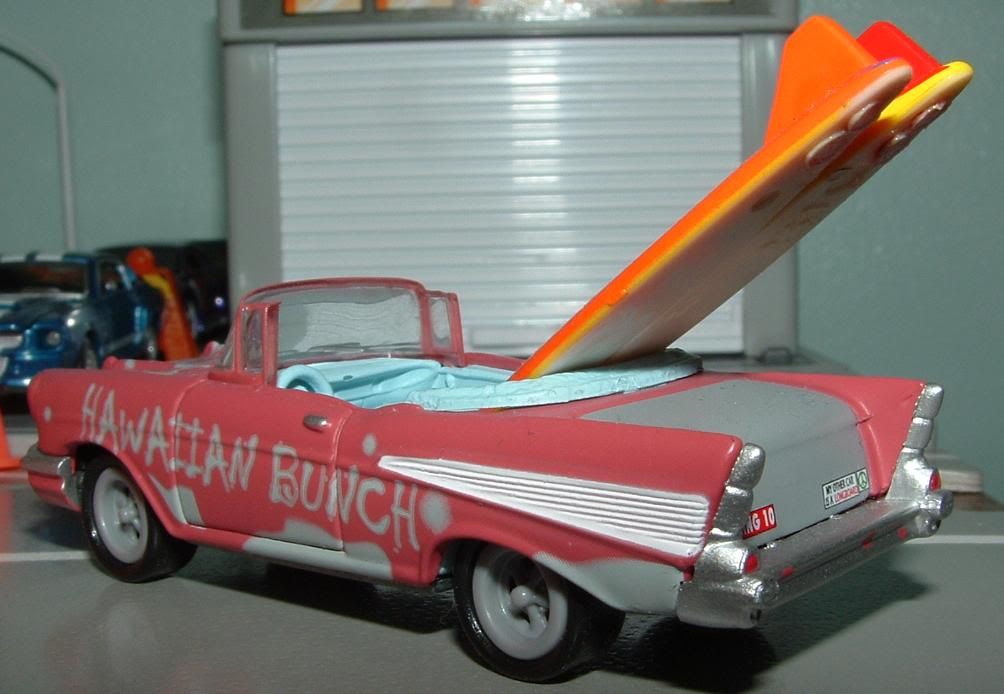
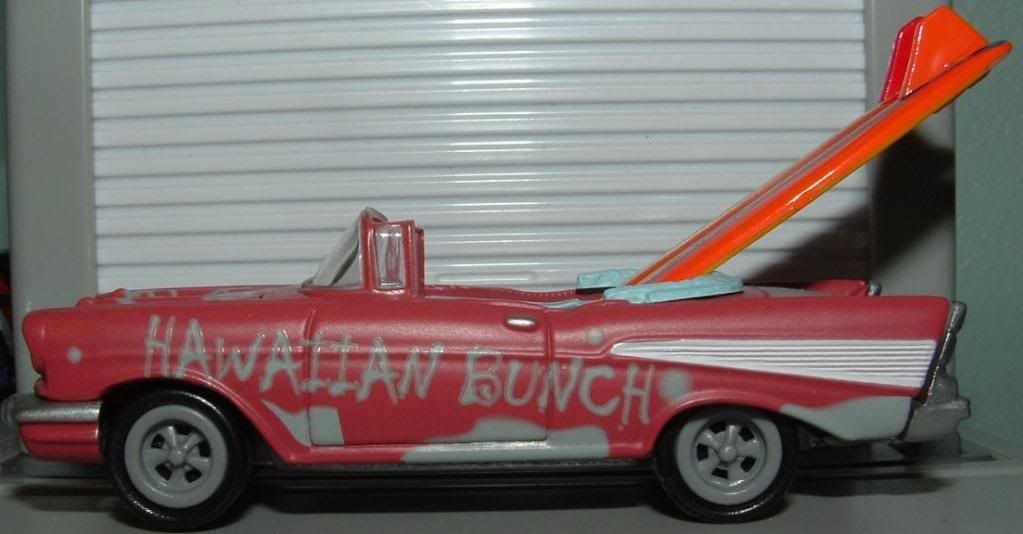
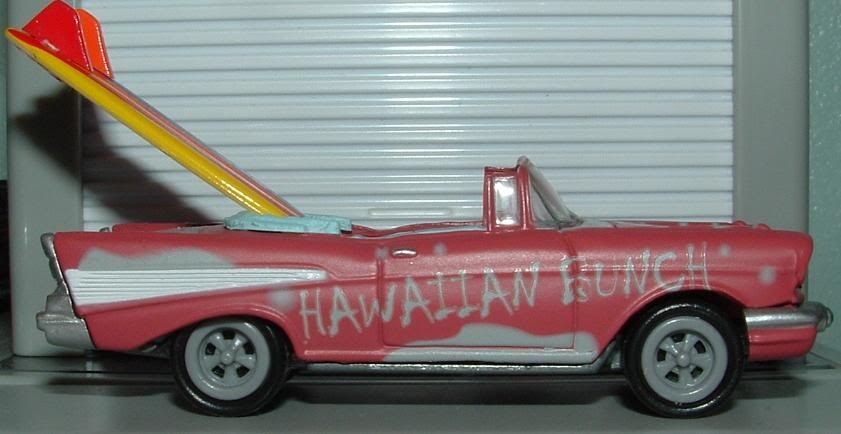

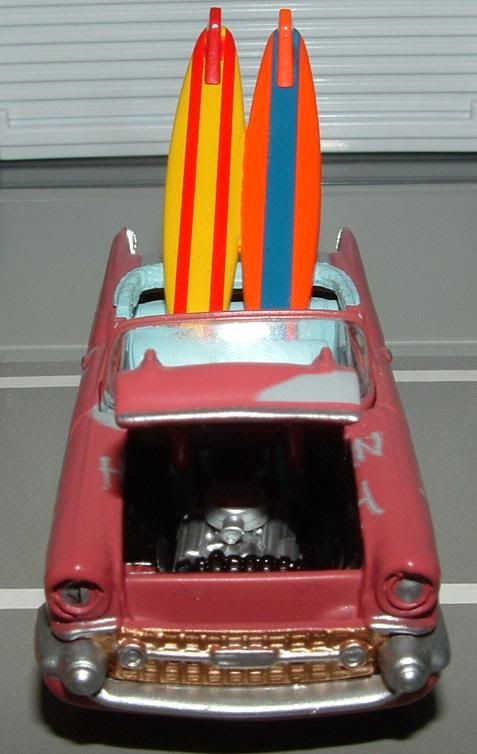
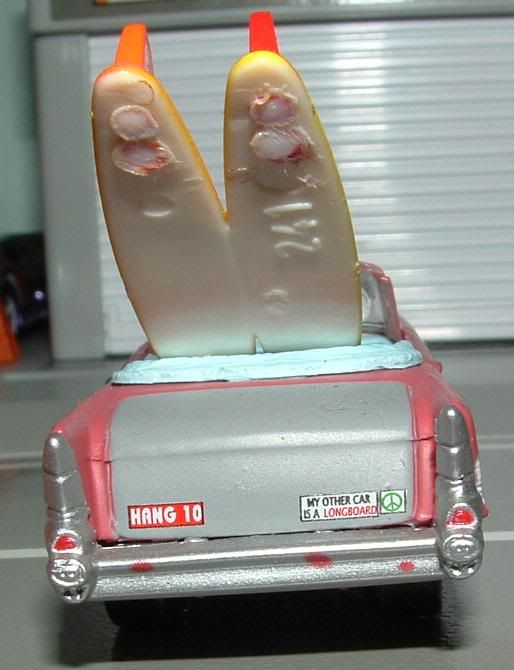
No comments:
Post a Comment